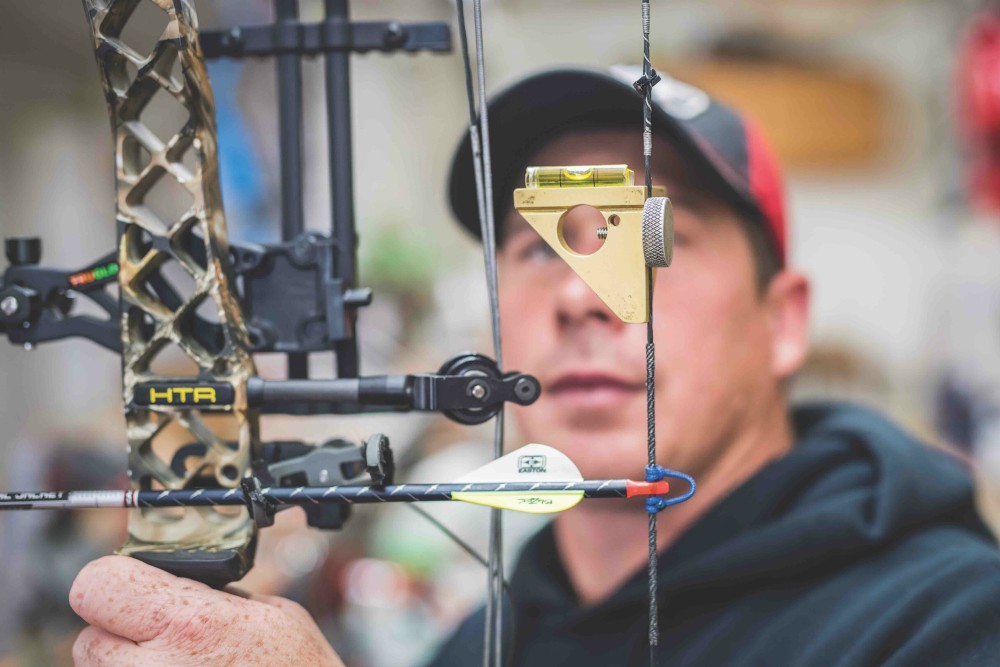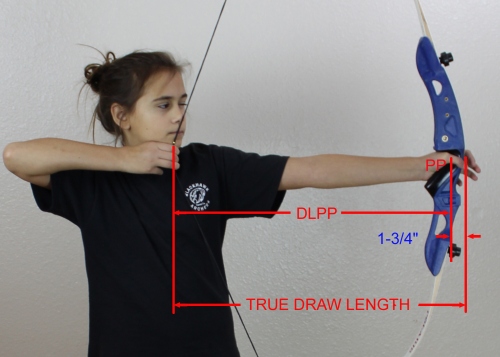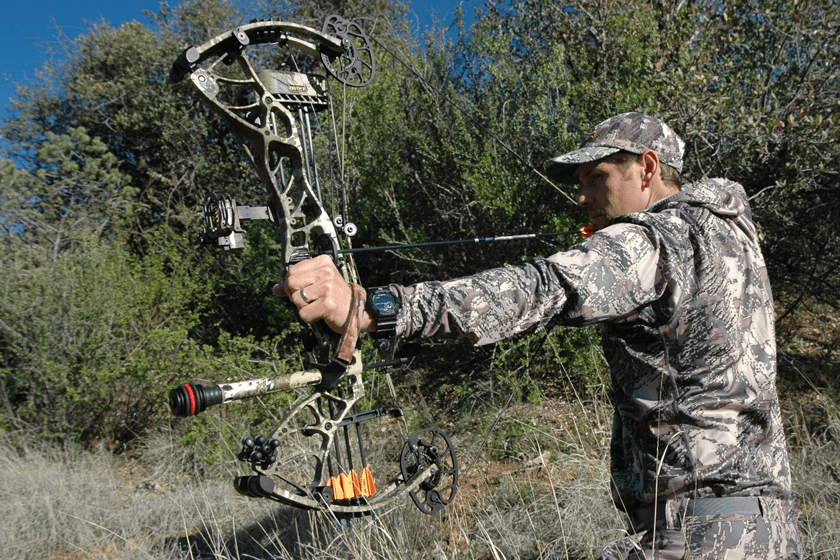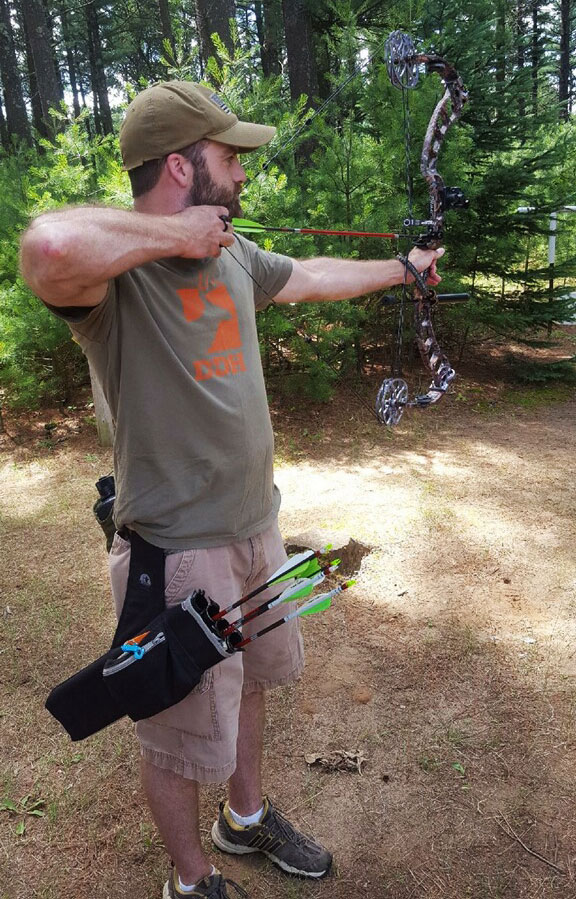To change the draw weight on a compound bow, follow these steps: adjust the limb bolts clockwise to increase the weight or counterclockwise to decrease it. The draw weight on a compound bow can be modified by adjusting the limb bolts.
Turning the bolts clockwise increases the weight, while turning them counterclockwise decreases it. By following these steps, you can easily change the draw weight on your compound bow to suit your preference and shooting style. It is essential to make these adjustments carefully to ensure proper performance and accuracy while using the bow.

Credit: shootingcabin.com
Understanding The Draw Weight Of A Compound Bow
When it comes to using a compound bow, understanding the draw weight is crucial for both accuracy and comfort. The draw weight refers to the force required to pull the string back to its maximum position before releasing the arrow.
It plays a significant role in determining the speed and power of the arrow shot from the bow. Here, we will dive deeper into what draw weight is, why it matters, factors to consider when choosing the appropriate draw weight, and the importance of adjusting it for accuracy and comfort.
What Is Draw Weight And Why Does It Matter?
- Draw weight: The amount of force required to fully draw the bowstring on a compound bow.
- The bow’s potential energy: The stored energy in the limbs when the bowstring is fully drawn.
- Speed and power: Draw weight directly affects the speed and power of the arrow.
- Accuracy: An appropriate draw weight improves accuracy by allowing the archer to maintain better control over the shot.
- Shock and vibration: Higher draw weights can result in increased shock and vibration, affecting shooting performance and comfort.
Factors To Consider When Choosing The Appropriate Draw Weight:
- Physical abilities: Consider your strength and fitness level when selecting the draw weight.
- Archery experience: Beginners should start with lower draw weights to develop proper form and technique.
- Purpose: Determine the primary usage of the bow (e.g., target practice, hunting) to choose the appropriate draw weight.
- Legal requirements: Some states or hunting regulations have specific requirements for minimum draw weights for hunting.
- Age and size: Younger or smaller individuals might need lower draw weights for comfortable shooting.
- Growth potential: If purchasing a bow for a growing child or teenager, consider the adjustability of the draw weight.
The Importance Of Adjusting The Draw Weight For Accuracy And Comfort:
- Shot consistency: Adjusting the draw weight allows archers to find their ideal balance between power and control, leading to consistent shots.
- Increased accuracy: The right draw weight enhances stability during aiming and release, improving accuracy.
- Reduced fatigue: An improperly adjusted draw weight can cause fatigue, affecting performance and enjoyment. Adjusting it to match your physical abilities increases comfort and allows for longer practice sessions.
- Injury prevention: Using a draw weight that exceeds your capabilities increases the risk of injuries, such as muscle strains or tendonitis. Adjusting the draw weight appropriately minimizes these risks.
Understanding and adjusting the draw weight of your compound bow is crucial for optimizing your shooting experience. By knowing the factors to consider and matching the draw weight to your physical abilities, you can achieve improved accuracy, comfort, and shooting performance.
Take the time to find the right draw weight for you and enjoy the benefits it brings to your archery journey.
Tools And Equipment Needed For Adjusting Draw Weight
Adjusting the draw weight on a compound bow requires the right tools and equipment to ensure a smooth and successful process. Having the proper tools not only makes the adjustment easier but also helps to maintain the safety of the bow and the person performing the adjustment.
Here are the essential tools for adjusting draw weight along with instructions on how to properly use each tool and important safety precautions to follow:
- Allen wrench set: This set of hex keys is crucial for adjusting various components of the compound bow, including the limb bolts, cams, and modules. It typically includes different sizes to fit different parts of the bow.
- Bow scale: A bow scale is essential for accurately measuring the draw weight of the bow. It allows you to determine the exact amount of force needed to draw the bowstring. Ensure the scale has a suitable weight range for your bow.
- Draw length indicator: This tool helps you measure the draw length, which is another important factor in adjusting the draw weight. It ensures that the bow is properly set up for your specific body measurements.
- Bow press: A bow press is necessary for safely and effectively adjusting the draw weight. It allows you to relax the tension on the bowstring and cables, making it easier to make changes without causing damage to the bow.
- Screwdriver set: A set of screwdrivers is useful for adjusting various screws and fasteners on the compound bow. Make sure to have both flathead and phillips head screwdrivers to accommodate different types of screws.
- Safety glasses: It is crucial to protect your eyes while working on a compound bow. Safety glasses shield your eyes from any potential flying objects or debris that may occur during the adjustment process.
- Bowstring wax: Bowstring wax is essential for maintaining the integrity of the bowstring. Regularly applying wax to the bowstring helps to prevent fraying and prolongs its lifespan.
Now that you know the essential tools for adjusting draw weight, it’s time to learn how to use each tool properly. Following the correct procedures ensures a successful adjustment while minimizing the risk of damaging your compound bow.
- Allen wrench set: Select the appropriate size of the allen wrench and carefully loosen or tighten the limb bolts, cams, or modules as required. Follow the manufacturer’s instructions for the specific adjustments you want to make.
- Bow scale: Attach the bow scale to the bowstring and draw it back to the desired draw length. Take note of the weight measured on the scale, which indicates the current draw weight of the bow.
- Draw length indicator: Use the draw length indicator to measure your preferred draw length. Adjust the modules or cams as necessary to achieve the desired draw length.
- Bow press: Safely secure the compound bow in the bow press, making sure it is stable and supported. Relax the tension on the bowstring and cables using the bow press, allowing you to make adjustments without strain.
- Screwdriver set: Select the appropriate screwdriver and carefully loosen or tighten the screws according to the required adjustments. Follow the manufacturer’s instructions to ensure proper handling.
- Safety glasses: Wear safety glasses throughout the entire adjustment process to protect your eyes from any potential hazards or accidents.
Remember to follow these safety precautions when working with a compound bow:
- Always refer to the manufacturer’s guidelines and instructions for adjusting draw weight.
- Keep your fingers clear of any moving parts or areas of potential pinching while making adjustments.
- Take your time and double-check each adjustment before moving on to the next step.
- Ensure that the bow is properly secured in a bow press to prevent any unexpected movements.
- Avoid over-tightening bolts or screws, as this can lead to damage or unintended performance changes.
By having the essential tools, knowing how to use each tool properly, and following the necessary safety precautions, you can confidently and effectively adjust the draw weight on a compound bow. Happy shooting!
Step-By-Step Guide To Adjusting Draw Weight On A Compound Bow
Assessing The Current Draw Weight Of Your Bow
To begin the process of adjusting the draw weight on your compound bow, it’s crucial to first assess the current draw weight. Here are a few steps to help you with this assessment:
- Make sure your bow is unstrung before proceeding with the assessment.
- Use a bow scale or draw weight gauge to measure the current draw weight.
- Take note of the reading on the scale or gauge, which represents the amount of force required to draw the bow fully.
Removing Tension From The Limbs To Begin The Adjustment Process
Before you can make any changes to the draw weight of your compound bow, it’s important to remove tension from the limbs. Here’s how you can do it:
- Find a suitable, safe location to perform this task, preferably with ample room for maneuvering.
- Ensure that the bow is not loaded with arrows, and remove any accessories attached to it.
- Carefully unstring the bow, following the manufacturer’s instructions, to release tension from the limbs.
- Store the bow safely away from children or pets while it is unstrung.
Adjusting The Limbs To Increase Or Decrease The Draw Weight
Once you have removed tension from the limbs, you can proceed to adjust the draw weight of your compound bow. Here’s a step-by-step guide on how to do it:
- Refer to your bow’s manual or the manufacturer’s guidelines to locate the limb pocket adjustment bolts.
- To increase draw weight, tighten the limb pocket adjustment bolts by turning them clockwise. For decreasing draw weight, loosen the bolts by turning them counterclockwise.
- Make adjustments in small increments, typically one full turn at a time, to ensure precision and prevent damage to the bow.
- Use a bow scale or draw weight gauge to measure the new draw weight after each adjustment.
- Continue adjusting the limb pocket bolts until you reach your desired draw weight.
Testing And Fine-Tuning The New Draw Weight For Optimal Performance
Once you have made the necessary adjustments, it’s essential to test and fine-tune the new draw weight to ensure optimal performance. Here are some steps to follow:
- String your bow carefully, following the manufacturer’s instructions.
- Start with a lighter draw weight and gradually increase it until you reach your desired level.
- Draw the bow multiple times to check for smoothness, consistency, and comfort. Pay attention to any irregularities or discomfort during the draw.
- Consider seeking assistance from a knowledgeable archery professional or coach to help fine-tune your draw weight for optimal shooting experience.
- Make any additional adjustments if required, always keeping safety and proper shooting technique in mind.
Remember, adjusting the draw weight on a compound bow requires caution, precision, and following manufacturer guidelines. By carefully assessing, removing tension, adjusting the limbs, and testing the new draw weight, you can ensure a customized experience that suits your shooting needs.
Happy shooting!
Tips And Tricks For Effective Draw Weight Adjustment
Adjusting the draw weight of a compound bow is essential to ensure optimal performance and accuracy. Whether you’re a beginner or an experienced archer, here are some valuable tips and tricks to help you successfully modify the draw weight on your compound bow.
Common Mistakes To Avoid When Adjusting Draw Weight:
- Rushing the process: Take your time when adjusting the draw weight of your compound bow. Rushing can lead to improper adjustments, affecting your shooting performance and potentially causing damage to your equipment.
- Neglecting safety precautions: Always prioritize safety when working with your bow. Ensure that the bow is unstrung and the tension is released completely before attempting to adjust the draw weight. This will prevent any accidental releases or injuries.
- Ignoring manufacturer’s guidelines: Every compound bow model has specific guidelines provided by the manufacturer regarding draw weight adjustments. It’s crucial to read and follow these instructions carefully to avoid any problems or warranty issues.
- Over-tightening limb bolts: Engaging in excessive turns on the limb bolts can result in damage to the bow limbs or the bow itself. Always refer to the manufacturer’s recommendations for adjusting the draw weight by turning the limb bolts, and be cautious not to overtighten them.
How To Find The Ideal Draw Weight For Your Skill Level And Shooting Style:
- Start low and gradually increase: If you’re a beginner or transitioning to a higher draw weight, it’s recommended to start with a lower poundage and gradually increase it as you become more comfortable. This allows your muscles to adapt and prevents muscle strain or injury.
- Consider your shooting style: Different shooting styles may require varying draw weights. For example, target shooting generally requires lower draw weights for accuracy and consistency, while hunting may benefit from higher draw weights for better arrow penetration. Take into account your shooting style and purpose to determine the ideal draw weight for you.
- Seek expert advice: If you’re unsure about finding the optimal draw weight for your skill level and shooting style, consult with a professional archer or a knowledgeable bow technician. They can assess your needs and provide personalized recommendations.
Fine-Tuning Your Bow For Consistent And Accurate Shooting:
- Using a bow scale: To achieve consistent draw weight adjustments, it’s recommended to use a bow scale. This tool allows you to measure the exact poundage and ensure uniform modifications on both limbs.
- Keeping records: Maintain a record of the changes you make to your bow’s draw weight. This way, you can keep track of adjustments that work best for your shooting performance, making it easier to replicate those settings in the future.
- Monitoring arrow flight: Observing the trajectory and flight of your arrows can provide valuable feedback on the effectiveness of your draw weight adjustments. Make note of any patterns or inconsistencies and adjust accordingly to achieve optimal arrow flight.
By following these tips and tricks, you can confidently adjust the draw weight on your compound bow to suit your skill level and shooting style. Remember to always prioritize safety and consult experts when needed for the best results. Happy shooting!
Troubleshooting Common Issues With Draw Weight Adjustment
Many archers enjoy the challenge of adjusting the draw weight on their compound bows. However, like any mechanical device, compound bows can encounter issues during the process. In this section, we will discuss common problems you may face while adjusting the draw weight and offer troubleshooting tips to help you overcome them.
Bow Limb Alignment Issues And How To Address Them:
- Misaligned limbs can cause difficulties in adjusting the draw weight of your compound bow. Here are some troubleshooting tips to address this issue:
- Check for any visible signs of limb misalignment, such as one limb appearing higher or lower than the other.
- If you notice misalignment, it may be due to loose limb bolts. Tighten the bolts using the appropriate wrench to ensure proper alignment.
- Inspect the limb pockets for any signs of damage or wear. If you detect any issues, consider seeking professional assistance.
Strings And Cables: Troubleshooting And Maintenance Tips:
- Problems with the strings and cables can also affect the draw weight adjustment process. Keep in mind the following troubleshooting tips:
- Check the strings and cables for any signs of fraying, stretching, or damage. If you spot any issues, it is crucial to replace them to ensure safe and accurate draw weight adjustment.
- Regularly inspect the bowstring and cables for proper tension. Over time, they may become loose, affecting the draw weight. Adjust the tension if necessary, following the manufacturer’s guidelines and recommendations.
- Proper lubrication of the strings and cables is essential to maintain smooth operation. Apply an appropriate bowstring wax or lubricant regularly to minimize friction and prolong their lifespan.
Seeking Professional Assistance When Encountering Persistent Problems:
- Although it is possible to troubleshoot and resolve many draw weight adjustment issues on your own, some problems may persist or require advanced technical knowledge. In such cases, it is highly recommended to seek professional assistance. A knowledgeable archery technician or bow specialist can provide expertise and ensure that your compound bow is functioning optimally. Don’t hesitate to consult the professionals when needed.
By addressing common issues related to bow limb alignment, strings, and cables, you can troubleshoot draw weight adjustment problems effectively. Remember to follow safety guidelines and consult professionals when necessary to ensure the best performance of your compound bow. Happy shooting!
Recommended Accessories For Optimal Draw Weight Adjustment
Enhancing the draw weight on a compound bow is crucial for achieving consistent and accurate shots. To optimize your draw weight adjustment, consider using the following recommended accessories:
Stabilizers And Dampeners For Enhanced Stability And Reduced Vibration:
- Stabilizers play a vital role in minimizing bow movement and maximizing stability during the shot. They help improve accuracy by counterbalancing the weight of the bow.
- Dampeners are designed to reduce vibration and shock, effectively absorbing the energy generated during the shot. They enhance shooting comfort and prevent any unnecessary noise.
Additional Accessories To Improve Draw Cycle And Overall Shooting Experience:
- Release aids: These handheld devices are designed to assist with the release of the bowstring. They offer consistent and smooth releases, resulting in improved accuracy and better draw weight control.
- D-loop: A small rope attached to the bowstring, forming a loop. It provides a consistent anchor point, allowing for a smooth and controlled draw cycle.
- Peep sight: This small device is inserted into the bowstring, creating a consistent reference point for aiming. It helps ensure proper alignment and accuracy during shooting.
Importance Of Proper Bow Tuning And Maintenance For Consistent Draw Weight Performance:
- Bow tuning: Properly tuning your bow is essential for consistent draw weight performance. It involves adjusting various components, such as the rest, peep sight, and cam timing, to ensure optimal arrow flight and accuracy.
- Regular maintenance: Keeping your bow in good working condition is crucial for maintaining consistent draw weight. This includes regular inspections, lubrication, and replacing worn-out parts. Maintenance prevents potential issues that may affect your draw weight adjustment.
By utilizing these recommended accessories and practicing proper bow tuning and maintenance, you can achieve optimal draw weight adjustment and improve your overall shooting experience. Ready to take your archery skills to the next level? Give these accessories a try and experience the difference.
Safety Precautions And Maintenance For Your Compound Bow
When it comes to changing the draw weight on your compound bow, it’s essential to prioritize safety precautions and proper maintenance. By following these guidelines, you can ensure a safe and reliable shooting experience while prolonging the lifespan of your bow.
Proper Storage And Maintenance Practices To Prolong The Lifespan Of Your Bow:
- Store your compound bow in a cool and dry place to avoid any potential damage from moisture or extreme temperatures.
- Use a bow case or rack to protect your bow from accidental bumps or falls, both during storage and transportation.
- Inspect your bow regularly for any signs of wear and tear. Pay close attention to the cables, strings, and limbs, as these components are crucial for the bow’s functionality and safety.
- Clean your bow regularly with a soft cloth to remove any dirt, debris, or moisture that may have accumulated during shooting or storage. Be gentle, especially when cleaning the limbs and cams, to avoid damage.
- Apply wax to the bowstrings and cables as recommended by the manufacturer. This helps lubricate the fibers and extends their lifespan.
Recommended Safety Gear When Adjusting Draw Weight:
- Safety glasses: Protect your eyes from any potential debris or accidents that may occur during the adjustment process.
- Armguard: Prevent any injury to your forearm caused by the bowstring while adjusting the draw weight.
- Finger tabs or release aids: These accessories provide a secure grip and ensure controlled release, reducing the risk of accidents.
- Bow press: If you plan to change the draw weight significantly, using a bow press is highly recommended. This tool allows you to safely manipulate the bow’s components without putting excessive strain on them.
Regular Inspection And Maintenance For A Safe And Reliable Shooting Experience:
- Check the draw weight regularly to ensure it remains within the optimal range recommended by the manufacturer. Adjusting the draw weight beyond the recommended limits can affect the bow’s performance and compromise your shooting experience.
- Inspect the bowstring and cables for any signs of fraying, wear, or damage. Replace them if necessary to maintain optimal performance and minimize the risk of accidents.
- Verify that the sights, rests, and other accessories are securely attached and functioning correctly. Loose or defective components can affect accuracy and safety.
- Lubricate the bow’s moving parts, such as the axles and cams, with a suitable lubricant. This reduces friction, enhances smooth operation, and prolongs the lifespan of these components.
- Familiarize yourself with your bow’s owner’s manual and follow the manufacturer’s guidelines for maintenance and inspection intervals. Adhering to these instructions will ensure a reliable shooting experience while prioritizing safety.
Remember, safety should always be your top priority when handling a compound bow. By practicing regular maintenance and following these safety precautions, you can enjoy a safe and successful shooting experience for years to come.
Frequently Asked Questions For How To Change The Draw Weight On A Compound Bow?
How Do I Adjust The Draw Weight On A Compound Bow?
To adjust the draw weight on a compound bow, you’ll need an allen wrench. Locate the limb bolts on each limb and loosen or tighten them equally to increase or decrease the weight. Be sure to check and adjust the draw weight for both limbs to maintain balance and accuracy.
What Is The Purpose Of Changing The Draw Weight On A Compound Bow?
Changing the draw weight on a compound bow allows you to customize the bow’s performance to suit your needs. Increasing the weight increases arrow velocity and kinetic energy, while decreasing it provides easier draw and longer shooting sessions. Adjusting the draw weight can help optimize accuracy and comfort for different shooting situations.
How Often Should I Change The Draw Weight On My Compound Bow?
The draw weight on a compound bow should be adjusted whenever you feel the need to change your shooting conditions or preferences. Whether you’re transitioning between target practice and hunting or building your strength over time, it’s recommended to monitor and adjust the draw weight accordingly.
Pay attention to your comfort and shooting accuracy to find the right balance.
Conclusion
Changing the draw weight on a compound bow is a crucial aspect of an archer’s journey. By modifying the draw weight, you can enhance your accuracy, achieve better arrow velocity, and improve your overall archery experience. Remember to take all necessary safety precautions when adjusting your bow’s draw weight, and consult with a professional if needed.
Whether you’re a beginner or an experienced archer, the process of changing the draw weight can be straightforward and rewarding. By following the steps outlined in this blog post and practicing patience and precision, you’ll be able to find your ideal draw weight and take your archery skills to the next level.
So go ahead, experiment, and enjoy the thrilling feeling of hitting your target with the perfect draw weight tailored to your needs. Happy shooting!

General Manager & Auditorial Head.
Killian Jake is a World Sports Traveler and hobbyist sports lover. By exploring different sorts of playing modules like indoor, outdoor, and many more. As for professionalism and writing, it’s helpful to give you the right suggestions on different games and sports.




